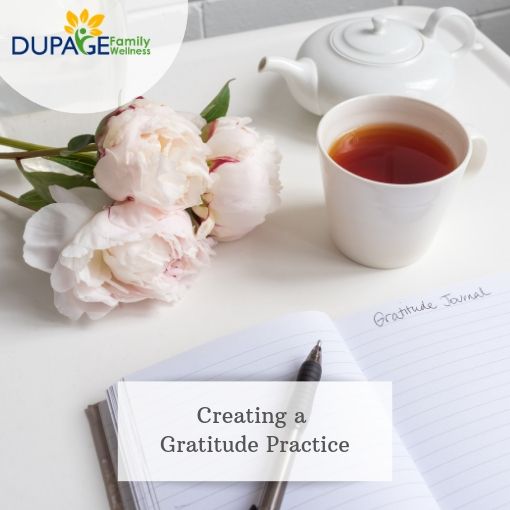 Would you be interested in a simple practice that research has found to be beneficial for your physical, psychological, and social well-being? What if I told you this practice was free, did not take much time, and could be done in the privacy of your own home?
Would you be interested in a simple practice that research has found to be beneficial for your physical, psychological, and social well-being? What if I told you this practice was free, did not take much time, and could be done in the privacy of your own home?
Some of you may have already guessed that we are talking about creating a Gratitude Practice. A Gratitude Practice is different than having an "attitude of gratitude" or "looking on the bright side of things."
Let's explore the benefits of this practice and how to start one, but first let's talk about why many people cringe at the thought of gratitude!
Why Many People Don't Like Gratitude Practices
With study after study showing the impact that gratitude has on both physical and emotional well-being, implementing a gratitude practice could be in our best interest. While practicing gratitude has many benefits, at times it can feel like we are just being asked to “look on the bright side”.
In truth, gratitude must be held in tension with the reality of life. It is crucial to lean into moments of both gratefulness and suffering.
This week we will look at the importance of gratitude and how to cultivate it. But stay tuned, next week we will explore authentic gratitude in difficult seasons.
(Special Note: If you are in a difficult season and the thought of starting a gratitude practice makes you want to scream, you may want to read next week's blog first! You can always come back for the details on the benefits of gratitude and how to start a gratitude practice after considering how to honor your suffering in the process.)
The Benefits of Gratitude
Feelings of gratitude are good for our brains, activating the hypothalamus and flooding our brains with the feel-good hormone dopamine. Some studies have found it to decrease the prominent stress hormone cortisol, as well as blood pressure, while increasing heart rate variability.
Robert Emmons, the world’s leading scientific expert on gratitude, found that people who consistently practice gratitude report many physical, psychological, and social benefits such as:
Physical
- Stronger immune systems
- Less bothered by aches and pains
- Lower blood pressure
- Exercise more and take better care of their health
- Sleep longer and feel more refreshed upon waking
Psychological
- Higher levels of positive emotions
- More alert, alive, and awake
- More joy and pleasure
- More optimism and happiness
Social
- More helpful, generous, and compassionate
- More forgiving
- More outgoing
- Feel less lonely and isolated.
Brene Brown On Joy & Gratitude
Researcher Brene Brown has stated that “there is no joy without gratitude”. Listen as she discusses what her research taught her about the importance of establishing a gratitude practice. (Hint: she expected to find that joy led to gratitude, but found it was the other way around!)
How to Cultivate a Gratitude Practice
There are many things that you can do to create a practice of gratitude. The key is to establish habits that help you focus on something you are thankful for on a regular basis. It is important that these habits feel both fresh and authentic.
While it may not feel natural at first, it’s important to focus on being genuine. This means being completely honest with ourselves. We get more benefit from focusing on small things we are truly thankful for than from pretending we are grateful for larger things that we think we should be thankful for.
We receive the most benefit from practices that are fresh and have not grown mundane. If we start to feel like we are doing our gratitude practice to check it off our to-do-list, it may be time to switch up our gratitude practice. And with so many ways to explore gratitude, there is no reason to get stuck in a rut.
- Create a gratitude journal.
- Write thank you cards or letters of affirmation to people in your life.
- Meditate on things you are grateful for each morning for 5 minutes.
- Help someone that doesn’t have all the advantages that you do.
- Find something to look forward to each week.
- Think about someone who has influenced your life and write them a letter.
- Pray to express thankfulness for the good things in your life.
- Choose one word that brings up feelings of gratitude (hope, life, family, friends, health, etc.) each day. Write the word down and think about it throughout the day.
- Listen to a song you enjoy and take time to really appreciate it.
- Practice mindful eating to really appreciate the gift of food.
- For more ideas check out 40 Simple Ways To Practice Gratitude.
If you are ready to jump into a gratitude practice that is great! But if you are in a difficult season and can’t imagine how to develop such a practice, be kind to yourself this week. Next week we will look at how to be open to gratefulness in authentic ways during difficult seasons!
Dr. Jamie
